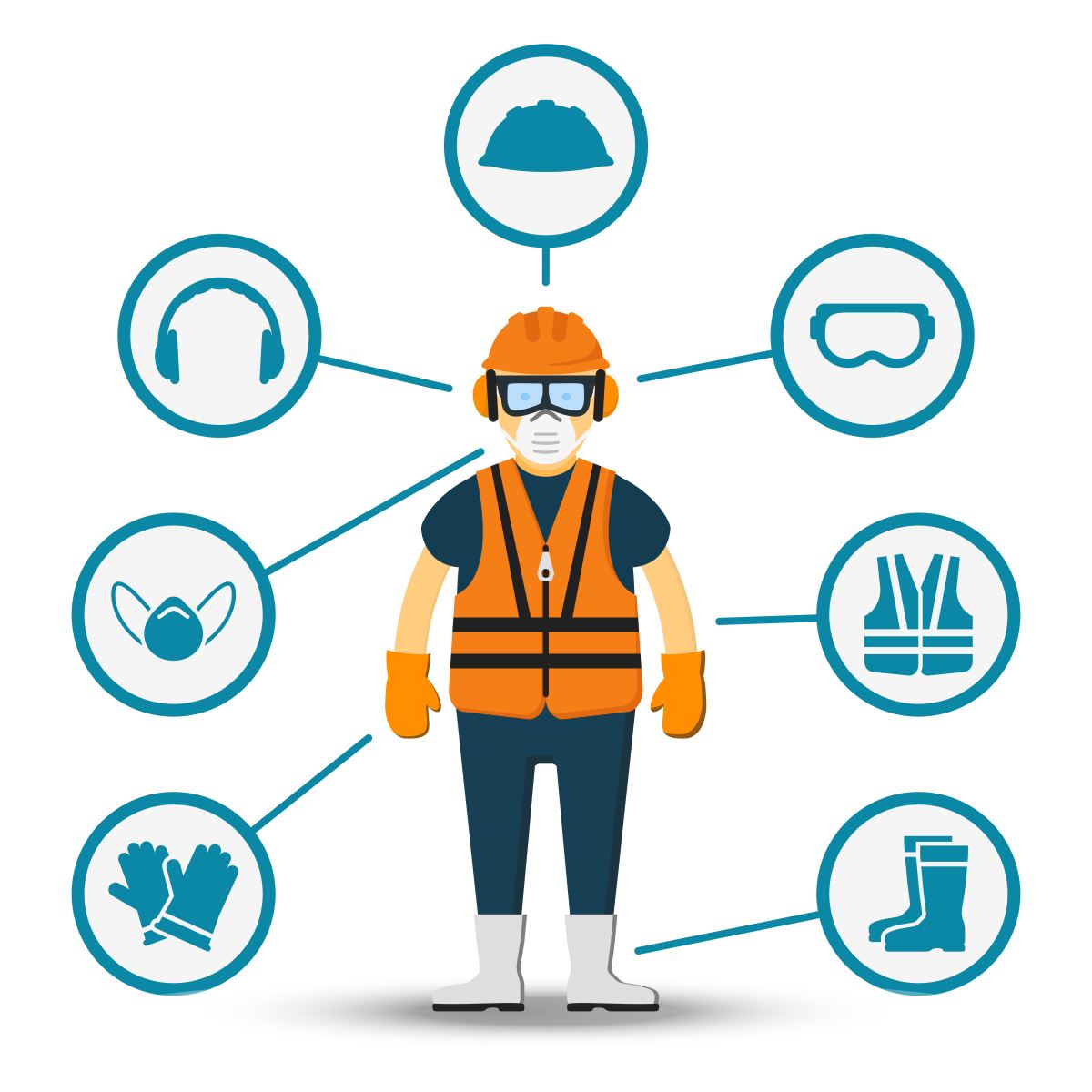Employees are a company’s greatest asset; just as companies preserve and maintain their equipment, it is a priority to keep their employees safe, especially those working outdoors. Let us then review Personal Protective Equipment, also known as PPE.
Employees at a construction site are faced with several hazards, which include, but are not limited to, being exposed to harsh chemicals or loud noise that could impair their hearing. PPE are items you put on to protect yourself, such as gloves, helmets, safety shoes, protective glasses, ear plugs and muffs, etc. Each item plays an important role in personal safety:
- Hand injuries are common; hence, using a protective glove while working is important. Gloves differ depending on the task performed; for example, some gloves are cut-resistant, while others are heat-resistant. Therefore, it is important to know what you need gloves for to decide which ones to choose.
- Eye protection is also indispensable; protective glasses and shields prevent eye injuries that may result, for example, from chemical splashes, welding, etc., and vary accordingly.
- Safety shoes are also vital throughout the site; their importance lies in providing protection to the whole body, not just the feet! They protect the feet from likely injuries, such as cuts that may result from a heavy object falling on to them, or a dangerous object that can penetrate regular shoes. Safety shoes protect also from tripping or falling, likely to occur when walking on a slippery surface.
- As for protecting ears, they can be protected using ear plugs, ear muffs, or sometimes a combination of both is required; this, of course, depends on the intensity of the sound and its duration.
- Finally, the helmet or hard hat protects the head from numerous injuries that may occur if a heavy object falls on it.

PPE items discussed here are not complete; only basic items are mentioned. Each company identifies its requirements and educates its employees as to what items they should use and when. This leads us to the importance of raising employees’ awareness; to get to know how, where, and when to use safety tools is the key to avoiding accidents on site. Knowledge, as a result, becomes just as important as the availability of the tools.
To guarantee safety, companies provide training to ensure individuals are qualified to run certain equipment. They also raise employees’ awareness of the dangers they may encounter while working at external sites. Repeatedly, companies remind their workers to never take their safety at work for granted, and that they should work on achieving that goal through their vigilance and following safety measures to the letter. A company should ascertain that everyone has knowledge to stay safe and the willingness to act to prevent likely injuries.
Additionally, more measures are required to guarantee safety. Removing unnecessary objects from work sites is important to prevent tripping and ensuring no object is loose to prevent, for example, head injuries. During construction, some areas are barricaded so that nobody could walk on, and here comes the importance of signs. Signs should be clear to achieve their purpose. They should be distributed throughout the site to ensure employees know which areas are safe and which are not. “Hard Hat Required”, “Authorized Personnel Only”, and “Open Pit Proceed with Caution” are among the signs that can be seen inside a construction site.
Your safety does not end at the equipment you use as some people may believe; it is a broader concept that encompasses protection, vigilance, information, and knowledge of what to do, what to wear, where to walk, and how to prevent damage. It is, therefore, important to ask questions and share your knowledge with others. Use your common sense and remember it is better to be safe than sorry. Safety on site is everyone’s responsibility, for as Roman poet Horace once said, “Your own safety is at stake when your neighbor’s wall is ablaze”.
References
audiologyonline.com
hse.gov.uk
realsafety.org
safetysign.com
*The article was first published in print in SCIplanet, Spring 2013 Issue "Technology".
Images by Freepik.